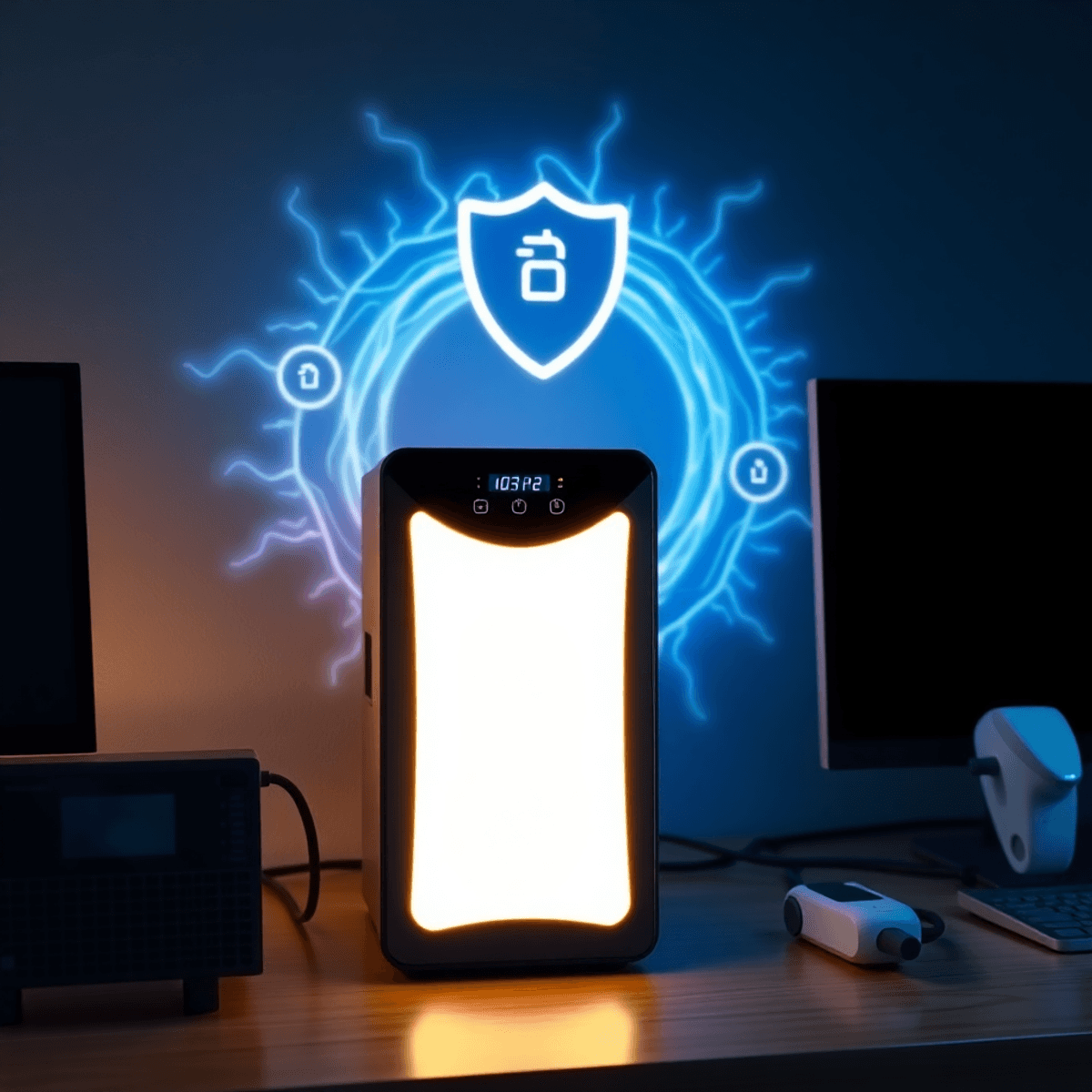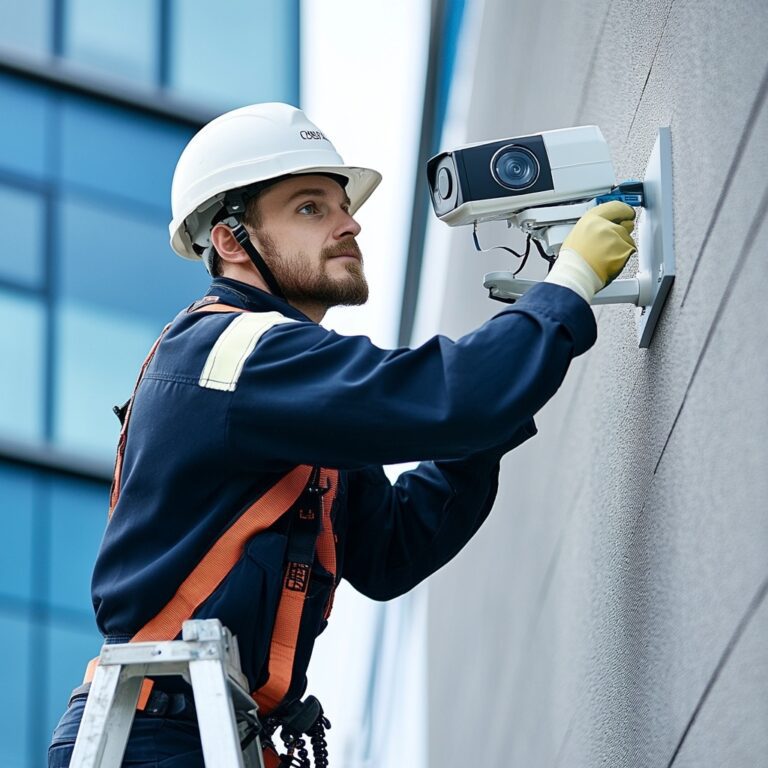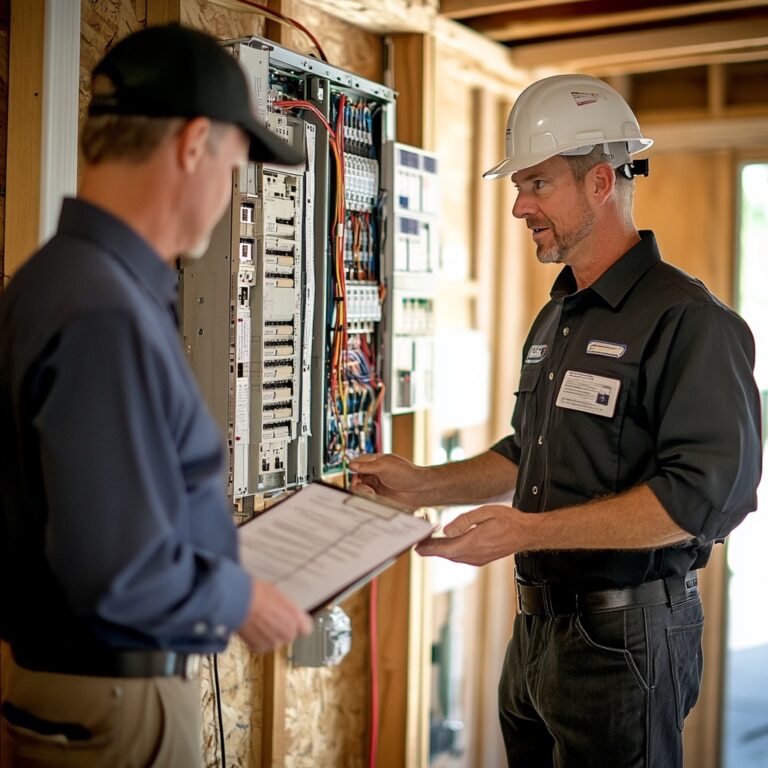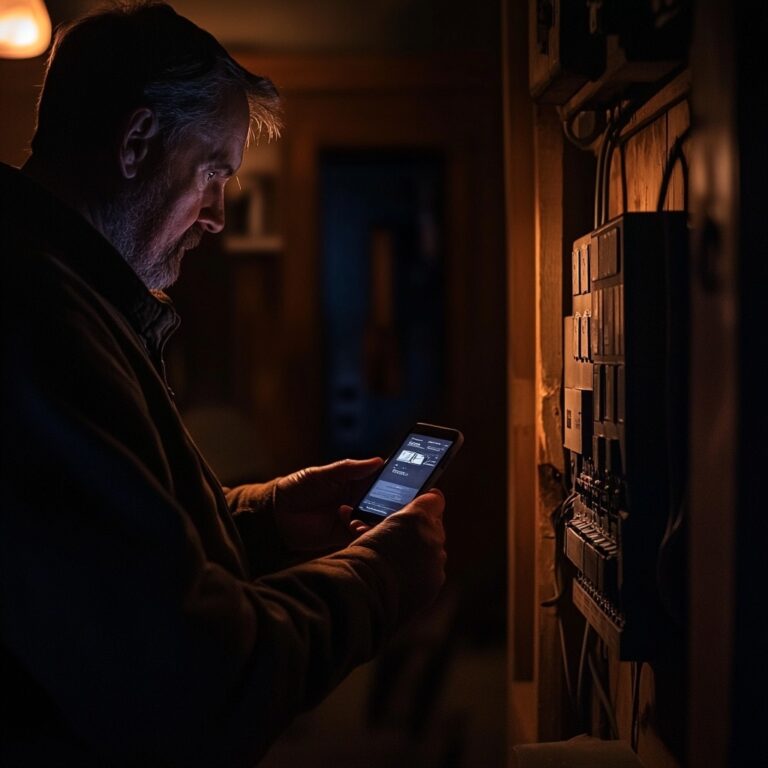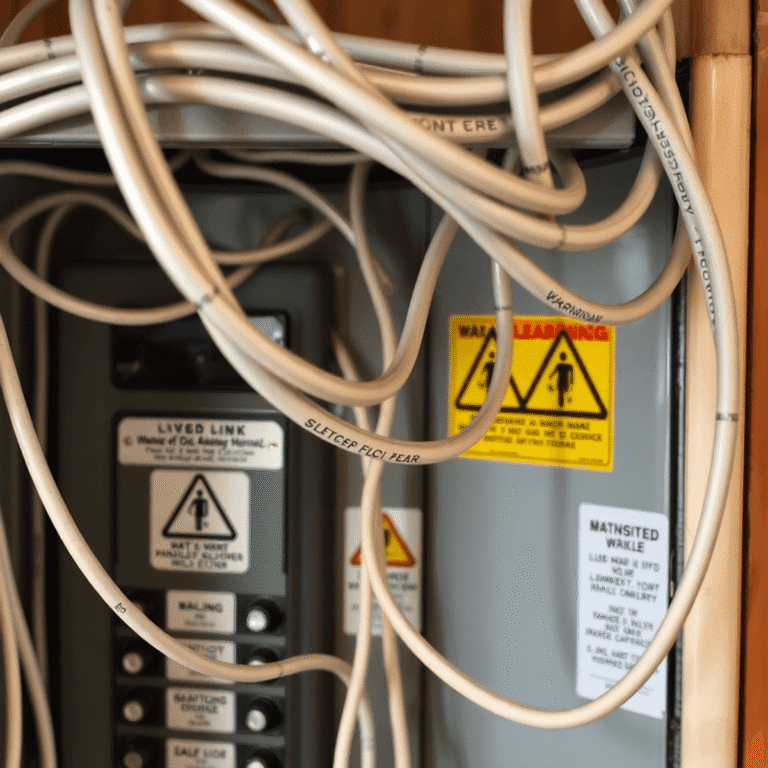How UPS Systems Protect Sensitive Electronics
Sensitive electronics power our homes and businesses, but they are always at risk from unpredictable power issues. Uninterruptible Power Supply (UPS) systems are the first line of defense against these threats, making sure that computers, servers, medical devices, and entertainment systems stay protected when the power supply is not stable.
In today’s digital world, protecting sensitive electronics is essential. Equipment failures caused by blackouts or power surges can lead to lost data, interrupted work processes, and expensive repairs—outcomes that nobody wants in a busy office or a connected home.
This article explains how UPS systems protect sensitive electronics, covering:
- The purpose and main parts of UPS protection
- Common electrical problems that can affect device reliability
- The different ways UPS types operate to keep sensitive electronics safe
- Practical tips for selecting the right system for your setting
- Real-life examples demonstrating successful UPS solutions
You’ll find useful information to help you keep your important devices safe and functioning smoothly. If you’re interested in putting these solutions into action, don’t hesitate to reach out to us for more details about our services.
Understanding UPS Systems
A Uninterruptible Power Supply (UPS) is an essential device for anyone relying on sensitive electronics. At its core, a UPS system acts as a buffer between your valuable equipment and the unpredictable nature of mains electricity. The primary function of a UPS is to provide immediate backup power and protection during power disturbances, preventing disruptions that could damage devices or lead to costly downtime.
Key Components of a UPS
Key components form the backbone of every reliable UPS unit:
- Battery Backup: This is the heart of any UPS. When a power outage occurs, the battery seamlessly takes over, supplying electricity to keep your devices running for a limited time. This window allows for safe shutdowns or uninterrupted operation until main power returns.
- Surge Protector: Sudden voltage spikes can instantly destroy electronics. The surge protection component absorbs and diverts excess energy away from your equipment, acting as a shield against damaging surges and spikes.
- Voltage Regulator: Fluctuations in voltage—such as dips (brownouts) or overvoltages—are common in many environments. A built-in voltage regulator stabilizes the output supplied to your devices, ensuring they always receive consistent, safe power.
Different Types of UPS Systems
UPS basics include several different topologies designed for various levels of protection:
- Standby (Offline) UPS: Simple and cost-effective, best suited for home offices or basic electronics.
- Line-Interactive UPS: Adds automatic voltage regulation for environments with frequent brownouts or minor fluctuations.
- Online (Double Conversion) UPS: Provides the highest level of protection by continuously converting incoming power and filtering out all anomalies—ideal for critical servers and business infrastructure.
Understanding these elements helps you identify which features align with your specific needs and device sensitivities.
Common Power Problems That Can Harm Sensitive Electronics
Power surges, blackouts, brownouts, and power spikes are typical power disturbances that can cause significant harm to sensitive electronic devices.
1. Power Surges
These occur when there is a sudden increase in voltage, often caused by lightning strikes or malfunctioning equipment on the power grid. Power surges can lead to the overheating of circuits, resulting in permanent damage to electronic components.
2. Blackouts
A complete loss of power in an area, blackouts can disrupt operations, causing data loss or system crashes. The abrupt halt of electrical supply can also damage hardware that was running before the outage.
3. Brownouts
Unlike blackouts, brownouts are partial drops in voltage. These are often caused by an overloaded electrical grid. Brownouts can cause electronic devices to underperform or fail, potentially leading to data corruption or hardware malfunctions.
4. Power Spikes
Short-duration spikes in voltage can be caused by various factors, including switching operations and short circuits. These spikes can degrade electronic components over time or cause immediate failure if the spike is severe enough.
The effects of these power disturbances on sensitive electronics are detrimental:
- Data loss is common during blackouts and brownouts due to unsaved information being erased.
- Hardware damage from surges and spikes can render devices unusable, leading to costly repairs or replacements.
- Operational interruptions caused by these power problems disrupt productivity and can have significant financial implications for both residential and commercial settings.
Understanding these issues highlights the need for robust protection solutions like UPS systems to safeguard valuable electronic assets from unpredictable power disturbances.
How UPS Systems Safeguard Sensitive Electronics From Power Disturbances
Protecting sensitive electronics from power disturbances requires a multi-layered approach. UPS systems offer several critical features designed to keep equipment operational and safe during electrical irregularities.
Battery Backup for Uninterrupted Power
- Continuous Operation: When a blackout or sudden outage strikes, a UPS instantly switches to its internal battery, supplying backup power so devices remain on.
- Data Integrity: This uninterrupted flow prevents data loss or corruption—particularly important for computers, servers, and network hardware.
- Graceful Shutdowns: With even a few minutes of backup power, you have time to save work and safely shut down systems, avoiding abrupt interruptions that could damage hardware or software.
Surge Protection by UPS
- Absorbing Spikes: Power surges—brief but intense spikes in voltage—can destroy sensitive components in computers, TVs, and networking gear. A quality UPS absorbs or diverts excess voltage away from connected devices.
- Shielding Investments: Surge protection by UPS preserves the lifespan of expensive electronics, reducing repair costs and downtime.
- Integrated Safeguards: Many UPS models use built-in surge suppression circuitry rated to handle repeated surges over years of service.
Voltage Regulation (Automatic Voltage Regulation – AVR)
- Stabilizing Fluctuations: Rather than simply switching to battery during every minor drop or rise in voltage, advanced UPS units use AVR technology to correct under-voltages (brownouts) and over-voltages without draining the battery.
- Consistent Performance: By keeping voltage within safe operating limits, voltage regulation UPS models prevent random shutdowns, flickering screens, and stress on sensitive electronics.
- Reduced Wear: Stable voltage means less strain on internal circuits, resulting in better device reliability over time.
UPS backup power benefits extend beyond just keeping the lights on—they actively defend your technology against unpredictable power events that threaten both performance and longevity.
Each of these protective functions addresses a specific threat posed by unstable electricity. The combination of battery backup, surge protection by UPS, and robust voltage regulation ensures sensitive electronics stay online and unharmed even when the grid fails to deliver clean power.
Different Types of UPS Systems and Their Protection Methods Explained
When it comes to safeguarding sensitive electronics, choosing the right type of Uninterruptible Power Supply (UPS) system is crucial. Here are the most common types of UPS systems available in the market, each with unique protection methods:
1. Standby UPS (Offline UPS)
Standby UPS, also known as offline UPS, is the most basic type. It is ideal for home use and small office setups.
Functionality:
Normally, it allows devices to run on direct utility power. When a power failure occurs, it switches to battery backup mode.
Protection Methods:
It provides basic protection against power outages and minor surges but offers limited defense against more severe power disturbances.
2. Line-Interactive UPS
Line-interactive UPS systems offer enhanced protection compared to standby models. These are well-suited for small to medium-sized businesses.
Functionality:
They feature an automatic voltage regulator (AVR) that corrects minor power fluctuations without switching to battery mode.
Protection Methods:
This type ensures continuous operation during brownouts and over-voltage situations by adjusting the output voltage. It also provides battery backup during extended outages.
3. Double-Conversion (Online) UPS
The double-conversion UPS, or online UPS, offers the highest level of protection and is often used in data centers and large enterprises.
Functionality:
It continuously converts incoming AC power to DC, then back to AC. This process isolates connected devices from all types of power disturbances.
Protection Methods:
Provides seamless transfer to battery power during outages, zero transfer time, and consistent voltage regulation. It effectively shields sensitive electronics from surges, spikes, noise, and frequency variations.
Key Differences
- Standby UPS:
- Best for personal computers and small office equipment.
- Basic protection against outages.
- Limited surge protection.
- Line-Interactive UPS:
- Suitable for networking equipment and servers.
- Enhanced voltage regulation.
- Moderate level of surge protection.
- Double-Conversion UPS:
- Essential for mission-critical applications.
- Superior isolation from all types of electrical problems.
- Highest level of continuous power quality.
Selecting the appropriate UPS system depends on your specific needs and the sensitivity of your electronic devices. Understanding these differences will help you make an informed decision for optimal protection.
Additional Features That Enhance Protection for Sensitive Electronics With UPS Systems
Certain UPS models come equipped with additional features that significantly enhance their ability to protect sensitive electronic devices. These features go beyond the basic functions of providing battery backup, surge protection, and voltage regulation, offering a more comprehensive safeguarding solution.
1. Data Line Protection
Many modern UPS systems incorporate data line protection to prevent surges from traveling through communication lines such as Ethernet cables, phone lines, and coaxial cables. This feature is crucial in environments where data transmission integrity is paramount, as it helps avoid damage to networked devices and loss of critical data.
2. Management Software
Advanced UPS models often include management software that allows for remote monitoring and control. This software provides real-time insights into the performance of the UPS system, alerts users to potential issues before they become critical, and enables automated shutdown procedures to protect connected equipment during extended outages. The convenience of managing your UPS system remotely ensures continuous oversight and quick response times.
By integrating these advanced features, UPS systems offer enhanced protection for sensitive electronics, ensuring not just power stability but also data integrity and efficient management. For environments with high sensitivity requirements, these additions can make a significant difference in maintaining operational continuity and safeguarding valuable assets.
Choosing The Right UPS System For Your Specific Needs And Environment Type (Residential/Commercial)
Selecting the appropriate UPS system hinges on understanding both the sensitivity of your devices and the unique requirements of your environment. In residential settings, protecting home offices, entertainment centers, or smart appliances often requires compact, user-friendly models. Commercial environments, on the other hand, demand robust solutions capable of safeguarding critical infrastructure such as servers, networking equipment, and industrial machinery.
Key considerations when choosing a UPS system include:
- Device Sensitivity Level:
Highly sensitive devices—such as medical equipment, servers, and specialized laboratory instruments—benefit from online or double-conversion UPS models. Less sensitive electronics may be adequately protected with standby or line-interactive UPS units. - Load Capacity:
Assess the total wattage and number of devices you need to protect. Oversizing is preferable to ensure seamless operation during outages. - Runtime Requirements:
Determine how long you need backup power in case of an outage. Mission-critical applications might require extended runtimes, while residential setups may only need enough time for safe shutdowns. - Environment Type:
Residential installations prioritize quiet operation and compact design. Commercial spaces focus on scalability, redundancy, remote management capabilities, and integration with existing infrastructure.
It’s also essential to understand the fundamentals of how a UPS system works. For instance, an Uninterruptible Power Supply (UPS) provides backup power during outages, ensuring that your devices continue to operate smoothly.
Expert advice from Protek Electrical and Data Services providers can help tailor the solution to your needs. With over 15 years serving Melbourne’s western suburbs, their team evaluates site-specific factors like local power quality issues, physical installation constraints, and growth projections. This experience ensures not just device protection but also compliance with safety standards and future-proofing against evolving technology demands.
Protek’s approach revolves around clarity—upfront pricing menus and transparent recommendations allow you to weigh options confidently. By tapping into their expertise, you sidestep common pitfalls like under-sizing capacity or overlooking surge protection for interconnected systems—a frequent cause of preventable damage in both homes and businesses.
Matching a UPS system to your requirements is about more than plugging in a box; it’s about creating a tailored shield that fits your assets and environment perfectly.
Real-Life Examples Of How Effective UPS Systems Have Been In Protecting Both Commercial And Residential Electronics Against Power Issues
Commercial Case Study: Preventing Downtime with Online Double-Conversion UPS
A medical imaging center in Melbourne faced frequent interruptions due to unpredictable power fluctuations and outages during critical diagnostic procedures. These disruptions not only risked data corruption but also threatened expensive imaging equipment with irreversible damage. To address this issue, Protek Electrical and Data recommended and installed an online double-conversion UPS system specifically designed for the facility’s high-sensitivity electronics.
Key outcomes included:
- Zero interruption during grid outages: The double-conversion UPS seamlessly switched to battery power, maintaining full operational continuity even during extended blackouts.
- Consistent voltage regulation: Sensitive diagnostic machines operated within optimal voltage ranges, eliminating wear-and-tear caused by power sags or surges.
- No data loss or hardware failures: All patient records and imaging results remained secure, fortifying the center’s reputation for reliability.
This installation demonstrated the value of partnering with certified experts who understand both the technical demands of commercial environments and the necessity for continuous uptime.
Residential Example: Protecting Home Offices from Brownouts
In a suburban area where frequent brownouts occurred, one homeowner decided to take action and protect their home office computer and networking equipment. After consulting with Protek Electrical and Data, a standby UPS was installed to provide a buffer against sudden voltage drops. Over the course of several months:
- No loss of unsaved work: The UPS ensured that there was enough backup time for proper system shutdowns during brownouts, preventing any work from being lost.
- Stable internet connection: Modems and routers remained powered during brownouts, guaranteeing uninterrupted access for remote work and security systems.
- Long-term device health: Computers, printers, and smart devices were spared from stress caused by low-voltage events, promoting their longevity.
Both scenarios highlight how selecting the right UPS model—paired with expert installation—translates to real-world protection against costly disruptions.
Conclusion
Investing in a quality UPS system is crucial for ensuring the reliability and safety of your sensitive electronics. These systems act as a shield against the unpredictable nature of power disturbances, safeguarding your valuable assets from potential damage and data loss.
Key takeaways:
- Reliability: A dependable UPS system provides continuous power, even during outages, preventing operational interruptions.
- Protection: Features like surge protection and voltage regulation defend your electronics from spikes and fluctuations.
- Proactive Measures: Implementing a UPS system proactively safeguards against the risks posed by an unstable electricity supply.
Assess your own situation: Identify the specific needs of your environment—whether residential or commercial—and choose a UPS system that fits those requirements. Consulting with experts like Protek Electrical and Data Services can provide tailored solutions to ensure maximum protection.
Don’t wait for a power issue to disrupt your operations or damage your devices. Act now by investing in a reliable UPS system to protect your sensitive electronics.
FAQs (Frequently Asked Questions)
What is a UPS system and how does it protect sensitive electronics?
A UPS (Uninterruptible Power Supply) system is a device that provides backup power and protection to electronic devices during power disturbances. It safeguards sensitive electronics by offering battery backup during outages, surge protection against power spikes, and voltage regulation for stable operation.
What types of power problems can harm sensitive electronic devices?
Sensitive electronics can be damaged by various power disturbances such as power surges, blackouts, brownouts, and spikes. These issues can lead to data loss, hardware damage, or operational interruptions if not properly managed.
What are the different types of UPS systems available and how do they differ in protecting electronics?
The main types of UPS systems include double-conversion (online) UPS, line-interactive UPS, and standby UPS. Double-conversion UPS offers continuous power with the highest level of protection, line-interactive adjusts voltage fluctuations efficiently, and standby UPS provides basic backup power and surge protection suitable for less critical applications.
How do additional features like data line protection and management software enhance UPS effectiveness?
Some UPS models include data line protection to prevent surges traveling through communication lines, safeguarding connected devices further. Management software enables remote monitoring and control of the UPS system, allowing proactive management to ensure continuous protection for sensitive electronics.
What factors should I consider when choosing the right UPS system for residential or commercial use?
Choosing the appropriate UPS depends on device sensitivity levels and environment type. Residential settings may require standby or line-interactive models for moderate protection, while commercial environments often need robust double-conversion systems. Consulting experts like Protek Electrical & Data Services can help tailor solutions based on specific needs.
Can you provide real-life examples demonstrating the effectiveness of UPS systems in protecting electronics?
Yes. For instance, a commercial case study showed that installing an online double-conversion UPS prevented downtime during critical business operations. Similarly, in residential settings, standby or line-interactive UPS models effectively prevented data loss caused by frequent brownouts over time, illustrating their practical benefits in diverse environments.

